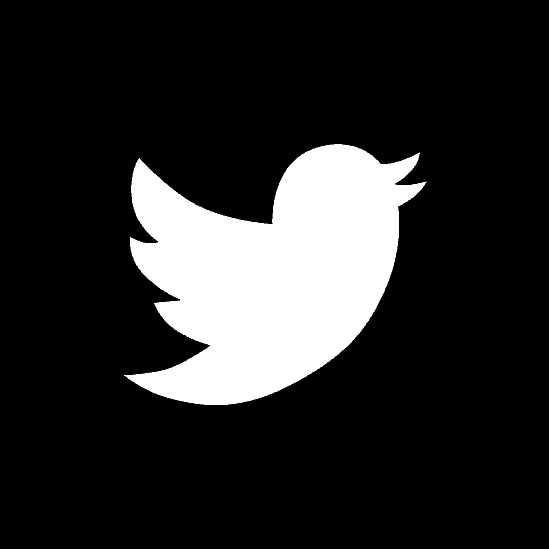“Folks rave about the Red Bull/ Felix campaign for example, but was it great?… Has it built long-term brand affection? I’m not so sure.” Stephen Cheliotis
Stephen Cheliotis is a leading brand consultant with a wealth of experience in brand and market evaluations and in providing strategic marketing and business counsel to senior management. He is currently Chief Executive of The Centre for Brand Analysis (TCBA) and Chairman of the UK Consumer Superbrands®, Business Superbrands® and CoolBrands® Councils. Stephen speaks on brand management at conferences and events while commenting on branding and marketing issues for the international media. He is a frequent guest on CNN the BBC and Sky among others. Stephen is a Visiting Professor at the London Metropolitan University Business School and Course Patron for their MSc in Brand Management.
THC: What inspires you and why?
Stephen: Making a difference inspires me. By that I mean utilising brand analysis to derive insights and learnings that can make a genuine improvement to not only the perception of a given brand but also the inherent value of the underlying business. For example, it is all well and good having a benchmark of your brand strength against competitors, to understand how well a brand has performed commercially, but really good brand analysis and research needs to do more than that, it needs to not just look backward but forward and feed into decision-making and enable further success for an organisation. Sometimes brand strategy or brand analysis projects can be superfluous when done incorrectly but done well they impact. On the brand strategy side of things for instance making aesthetic changes to logo’s or mission statements simply scratches the surface; the changes need to be bolder, wider and deeper to make a long-term difference to the business and its bottom line.
THC: How did you get into your business?
Stephen: By accident essentially. I was doing a PR degree at University, and part of the course required me to do a sandwich year. While I was doing work experience with a small PR agency, I went to meet some friends who were working at another PR agency in town, which happened to have a sister Brand strategy agency in the same building. While I was waiting for them I randomly got chatting to the CEO of that sister company, who at the end of our conversation asked me to assist him with some short-term projects. I completed those projects successfully and that led to me spending the rest of my placement year with them before re-joining permanently straight after University. While I was managing the agency’s PR function in my placement year, I also undertook a lot of research and analysis projects, as well as some client consultancy work. My appetite for the branding world was galvanised by that and so that’s what I focussed on when I returned and I have never looked back since.
THC: What are you working on right now?
Stephen: I’ve just completed the 2014 CoolBrands list. I’m also working on a project which is delving into understanding how entrepreneurialism works within larger business, asking the question, how do the principles apply to bigger establishments? Aside from examining how entrepreneurial a range of large businesses are, in terms of their entrepreneurial outlook and output, the project also seeks to understand why entrepreneurial in large business is important, how its changing and what big business can learn in terms of their structures, processes and cultures. It’s an interesting debate, for instance as larger corporations seek best talent they are increasingly having to allow people to be entrepreneurial within their business, because that is ever more a driver of satisfaction. People don’t want bureaucracy and close-mindedness, they want to be empowered. If you want to retain your business lead you need great talent, so aside from all the other structural and technological changes fueling entrepreneurialism generally, the war of talent alone is impacting how bigger companies think and act and the cultures they foster. The project is on behalf of the Marketing Agency Association. Aside from that project I am undertaking a brand evaluation exercise for a large UK association, while also chairing various panel discussions, for instance on how to build a luxury brand. I’m also in the middle of moving house too!
THC: How do you see your space evolving?
Stephen: That’s a million word essay. I see it as mandatory that there will be greater integration of marketing – all leading to a radical change in structures and resource allocation. As a whole the marketing industry tends to be far behind the curve, rather than where it should be, which is just ahead of it. True integration must happen at every level but really that should already have happened some time ago. I’d also say real time marketing is an obvious change and the speed to which marketeers need to listen, react and engage with consumers will continue to accelerate. Hopefully we will see the final nail in the coffin of one way marketing communication and the brand laggards will embrace the move to genuine conversation and dialogue with customers and wider stakeholders. There will also be a lot of changes around delivering solutions to consumers rather than brands delivering superficial campaigns. If a brand speaks to a customer it should achieve something for the consumer not just the brand. Great Marketing Communications is often tangible and not just communication based. Take for example all of the Apps currently being launched, if you’re in the travel industry and your App allows customer to breeze through the airport to the plane more efficiently, quickly and with less hassle then that’s a fantastic brand building communications device that enhances the relationship between brand and customer. In the social world, if you are building a relationship with someone then that person must need you or trust you and those elements are usually built through actually delivering something that aids that customers life. As branding folks, we’ve lost site of this simply fact and often got lost by glamourous campaigns and big awareness raising drives. A panel I am chairing on communications challenges the merits of big and bold campaigns vs steady and consistent campaigns. Folks rave about the Red Bull/ Felix campaign for example, but was it great? If you look at the cost vs benefit analysis, did it achieve a return on investment above and beyond rivals? Has it built long-term brand affection? I’m not so sure.
THC: Who’s your hero or icon?
Stephen: I have to say although it might be a bit boring but there aren’t really individuals in the industry who’s path I’d like to tread. I respect anyone who has an obvious vision and makes it come to life. Take many of the CoolBrands for example, their founders had a vision, they had belief, which they pursued and brought to life. The result is wonderful and entirely deserves respect but there is not one person I look up to for inspiration, they are all inspirational in their different ways and allow us to learn something.
THC: Where’s your favourite spot around the world?
Stephen: I love travelling, so many spots I could say. I would have to say the sentimental one… A small village in North East Crete – Elounda, holds a soft spot as I spent four years there as a child. Greek islands, generally, I love them, especially island hopping on a sail boat. Also I enjoy looking out and seeing huge expanses of trees and feeling totally away from the so call ‘real’ world, so the rainforests in places like Peru or Costa Rica, are very special indeed to me. I will also say that one of the few tourists spots that is still amazing and not spoilt by man has to be Machu Picchu. A walk there first thing in the morning, right before the vast bulk of visitors arrive, is really quite special.
THC: What’s your favourite injection of culture into a brand?
Stephen: In terms of a brand successfully sponsoring and ingratiating itself into culture through that route I would say O2. Their sponsorship of the Millennium Dome is great, and few people even remember the O2 as The Millennium Dome, so that alongside their wider work in the music industry I would say has been very successful. In a different way I admire London based jewellery brand Tatty Devine. The Creative Director takes inspiration from a wide range of cultural stimulus from the arts, music, science and nature. They add their own British humour, twist and take on everything they do but its often routed in past or present cultural movements or themes. It’s a great business that is constantly embracing and shaping modern British culture.
I would also have to add the BBC to any question on culture. They are intrinsically linked to so many aspects of British life – sport, music etc.. Its a fantastic institution. They are responsible for making popular and for sustaining core interest in what are key British cultural events, for instance if you take the Proms, they help it endure and remain a success. Even if you take something like Glastonbury or Wimbledon, these events might be popular regardless of the broadcaster but they are intrinsically linked to the BBC and the way the BBC does the coverage is iconic in itself. Every year British institutions are presented by the BBC in an often constant annual calendar of cultural sign-posts – for instance the recent marathon coverage symbolises the start of spring to me. Finally I’d mention, British Airways, for a number of reasons. The BA 2012 activity they did, around celebrating great new Britains. That was interesting because they worked with artists and chefs and gave them a platform on which to perform but why it was even more successful is it played on their inherent brand values of a British champion but presented them in a fresh light. It felt appropriate and quite BA on the one hand but quite bold and different for that brand on the other. They also refreshed and modernized themselves more generally using their brand values. The ‘To Fly; To Serve’ campaign, which while feeling quite traditionally British (like a butler service, or a night at the Savoy) also came across as modern and slick, alive and vibrant. That campaign helped propel them to number 1 for Superbrands 2014 in the UK and was a great example of a brand looking back at its own internal culture and purpose and its home nation culture and fusing them into something relevant to the modern customer.









